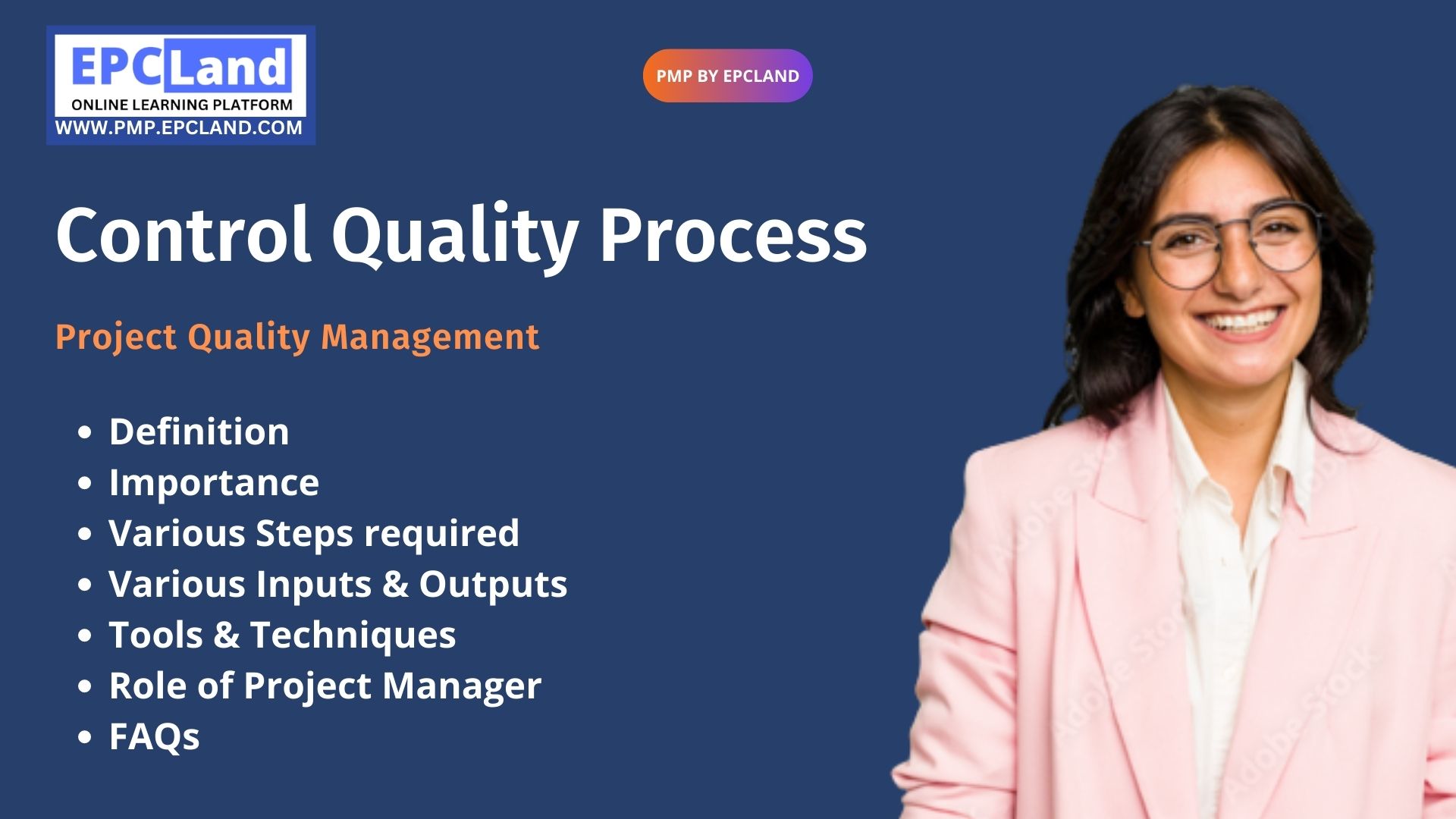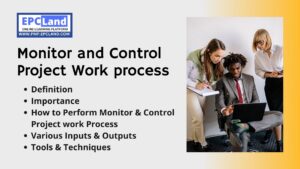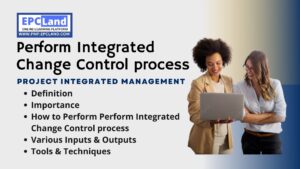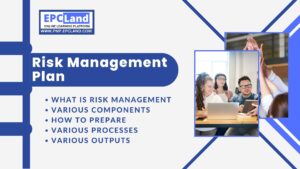Project Quality Management is a critical aspect of ensuring successful project outcomes. The Control Quality Process is a key component of this management approach, providing a structured and systematic approach to monitoring and controlling the quality of a project. By implementing this process, organizations can ensure that their projects are executed in line with quality standards, reducing the risk of defects, rework, and delays.
The Control Quality Process starts with identifying and documenting the quality requirements for the project. Next, it involves creating a plan for ensuring that these requirements are met throughout the project’s lifecycle. This includes monitoring and controlling project activities to ensure that quality standards are upheld, and taking corrective action if necessary.
A well-executed Control Quality Process can lead to significant benefits, such as increased customer satisfaction, improved project efficiency, and reduced costs. By relying on our expertise in project management, organizations can ensure that their projects are delivered on time, within budget, and with the desired level of quality.
What is the Importance of “Control Quality Process” in Project Quality Management
The “Control Quality Process” is important in Project Quality Management because it helps to:
- Ensure quality standards are met: By controlling the quality of a project, organizations can ensure that the project is executed in line with the defined quality standards.
- Reduce defects and rework: By monitoring and controlling the quality of a project, organizations can identify and address quality issues before they become major problems.
- Improve customer satisfaction: By delivering projects with the desired level of quality, organizations can increase customer satisfaction and build a strong reputation.
- Increase project efficiency: A well-executed Control Quality Process can help to streamline the project management process, reducing the risk of delays and improving overall project efficiency.
- Reduce costs: By identifying and addressing quality issues early on, organizations can reduce the costs associated with rework and fixing defects.
Attempt Quiz-1 on Control Quality Process
What are the Various Steps required in “Control Quality Process” in Project Quality Management
The “Control Quality Process” in Project Quality Management typically involves the following steps:
- Quality Planning: Identifying and documenting the quality requirements for the project and creating a plan for ensuring that these requirements are met.
- Quality Control Monitoring: Monitoring project activities to ensure that quality standards are being upheld and taking corrective action if necessary.
- Performance Measurement: Measuring the performance of the project and the quality control process to identify areas for improvement.
- Inspection and Testing: Inspecting and testing the project deliverables to ensure that they meet the defined quality requirements.
- Correction and Preventive Action: Taking corrective action to address quality issues and implementing preventive measures to reduce the risk of similar issues in the future.
- Record Keeping: Maintaining records of the quality control process and project performance, including any quality issues, corrective actions, and preventive measures.
- Continuous Improvement: Continuously reviewing and improving the Control Quality Process to ensure that the quality of the project is maintained and improved over time.
What are various Tools & Techniques used for “Control Quality Process” in Project Quality Management
The following tools and techniques are commonly used in the “Control Quality Process” in Project Quality Management:
- Inspection: Examining the project deliverables to identify and address quality issues.
- Testing: Verifying that the project deliverables meet the defined quality requirements.
- Statistical Sampling: Using statistical methods to sample a portion of the project deliverables for inspection or testing.
- Control Charts: Graphical representation of project data to identify trends and patterns, helping to identify quality issues.
- Flowcharting: Creating visual diagrams of the project process to identify potential quality issues and areas for improvement.
- Cause and Effect Diagrams: Analyzing potential causes of quality issues and identifying solutions to prevent similar issues in the future.
- Pareto Chart: A graphical representation of project data that shows the relative importance of quality issues, helping to prioritize solutions.
- Checklists: Lists of quality requirements that can be used to monitor and control the quality of the project.
- Process Mapping: Creating visual diagrams of the project process to identify potential quality issues and areas for improvement.
What are various Inputs required for “Control Quality Process” in Project Quality Management
The following inputs are typically required for the “Control Quality Process” in Project Quality Management:
- Quality Management Plan: A document that outlines the quality standards, processes, and procedures for the project.
- Project Management Plan: A comprehensive plan that outlines the project management approach, including the schedule, budget, and risk management plan.
- Project Charter: A document that outlines the project goals, stakeholders, and project scope.
- Project Deliverables: The products or services that will be delivered as part of the project.
- Project Schedule: A timeline of the project, including the start and end dates, milestones, and deadlines.
- Project Budget: A detailed plan for the costs associated with the project, including the cost of resources, materials, and labor.
- Project Status Reports: Regular reports that provide updates on the status of the project, including progress, risks, and quality issues.
- Work Performance Data: Information on the performance of the project, including the status of deliverables, quality issues, and corrective actions.
- Change Requests: Requests to modify the project scope, schedule, or budget.
What are various Outputs required for “Control Quality Process” in Project Quality Management
The following outputs are typically generated as part of the “Control Quality Process” in Project Quality Management:
- Quality Control Measurements: Results of the performance measurement activities, including data on the quality of the project and the quality control process.
- Verified Deliverables: Project deliverables that have been inspected and tested to ensure they meet the defined quality requirements.
- Corrective Actions: Actions taken to address quality issues and improve the quality of the project.
- Preventive Actions: Measures taken to reduce the risk of similar quality issues in the future.
- Change Requests: Requests to modify the project scope, schedule, or budget that have been reviewed and approved.
- Project Management Plan Updates: Updates to the project management plan, including changes to the quality management plan and risk management plan.
- Project Status Reports: Regular reports that provide updates on the status of the project, including progress, risks, and quality issues.
- Work Performance Information: Information on the performance of the project, including the status of deliverables, quality issues, and corrective actions.
What is Role of the Project Manager in “Control Quality Process” in Project Quality Management
The role of the Project Manager in the “Control Quality Process” in Project Quality Management is critical and multi-faceted. Some of the key responsibilities include:
- Developing the Quality Management Plan: The Project Manager is responsible for defining the quality standards, processes, and procedures for the project.
- Implementing Quality Control Procedures: The Project Manager is responsible for ensuring that the quality control procedures are properly executed and that the project deliverables are of high quality.
- Monitoring Project Performance: The Project Manager is responsible for monitoring the performance of the project and the quality of the project deliverables.
- Identifying Quality Issues: The Project Manager is responsible for identifying quality issues and implementing corrective actions to address these issues.
- Managing Change Requests: The Project Manager is responsible for reviewing and approving change requests that impact the quality of the project.
- Communicating with Stakeholders: The Project Manager is responsible for communicating with stakeholders, including the project team, customers, and stakeholders, on the status of the project and quality issues.
- Updating the Project Management Plan: The Project Manager is responsible for updating the project management plan, including the quality management plan and risk management plan, as needed.
Final Take away on “Control Quality Process” in Project Quality Management
The “Control Quality Process” in Project Quality Management is a crucial step in ensuring that projects are delivered to the highest standards of quality. This process involves monitoring and controlling the quality of the project, including the quality of project deliverables, the quality control process, and the identification and resolution of quality issues. The Project Manager plays a vital role in this process, leading the development of the Quality Management Plan and overseeing the implementation of quality control procedures. With effective “Control Quality Process” in place, organizations can ensure that their projects are delivered on-time, within budget, and to the highest standards of quality, leading to greater customer satisfaction and improved business outcomes.
Attempt Quiz-2 on Control Quality Process
FAQs on “Control Quality Process” in Project Quality Management
What is the “Control Quality Process” in Project Quality Management?
- The “Control Quality Process” in Project Quality Management is a process that involves monitoring and controlling the quality of the project and its deliverables.
What are the key components of the “Control Quality Process”?
- The key components of the “Control Quality Process” include developing the Quality Management Plan, implementing quality control procedures, monitoring project performance, identifying quality issues, and implementing corrective actions.
What is the role of the Project Manager in the “Control Quality Process”?
- The Project Manager is responsible for leading the development of the Quality Management Plan, overseeing the implementation of quality control procedures, monitoring project performance, and communicating with stakeholders on quality issues.
What are the outputs of the “Control Quality Process”?
- The outputs of the “Control Quality Process” include Quality Control Measurements, Verified Deliverables, Corrective Actions, Preventive Actions, Change Requests, Project Management Plan Updates, Project Status Reports, and Work Performance Information.
What are the benefits of effective “Control Quality Process”?
- Effective “Control Quality Process” can lead to improved customer satisfaction, better project outcomes, and greater business success. It ensures that projects are delivered on-time, within budget, and to the highest standards of quality.



















